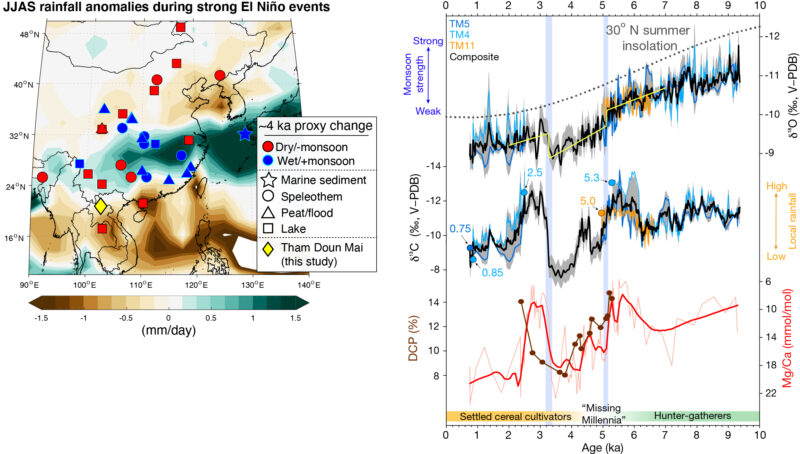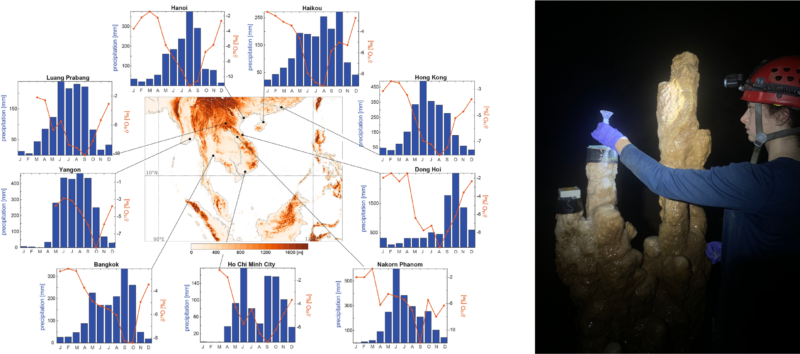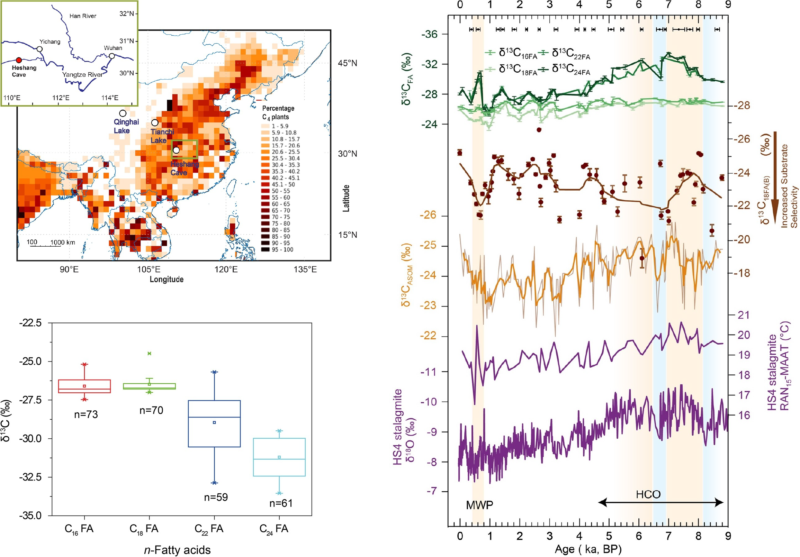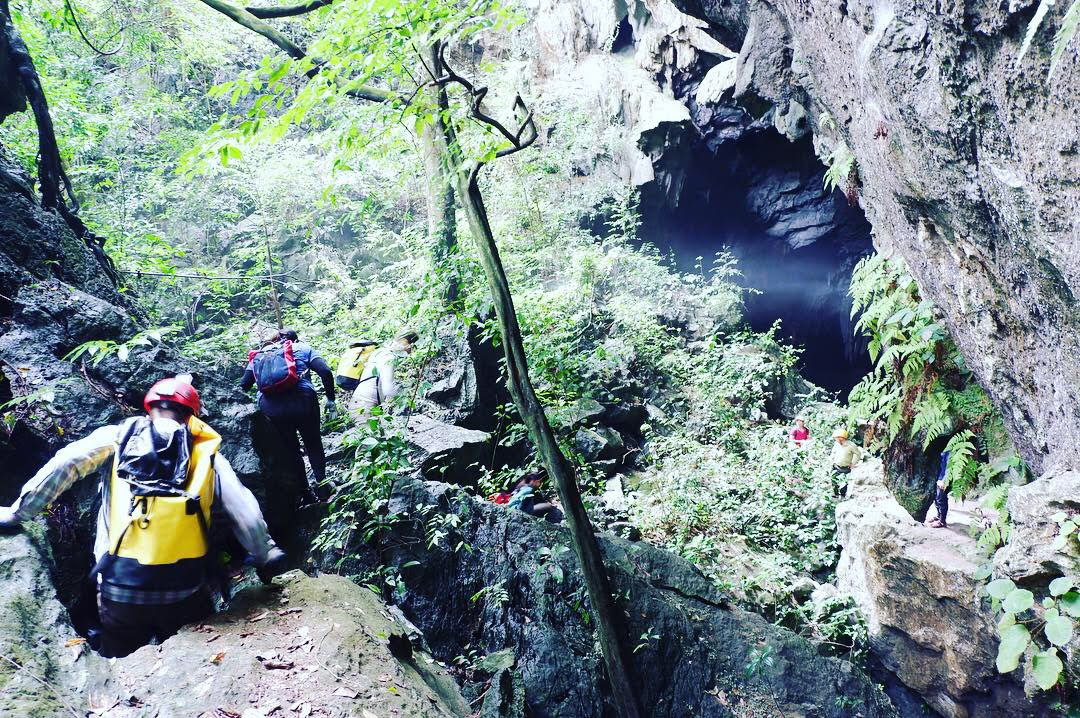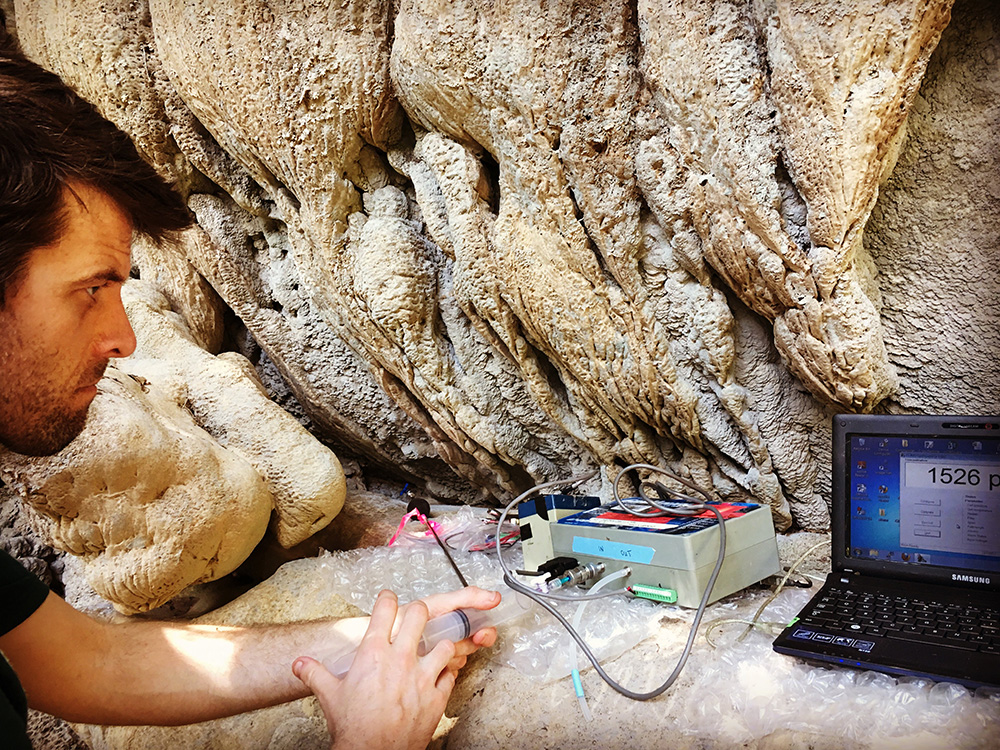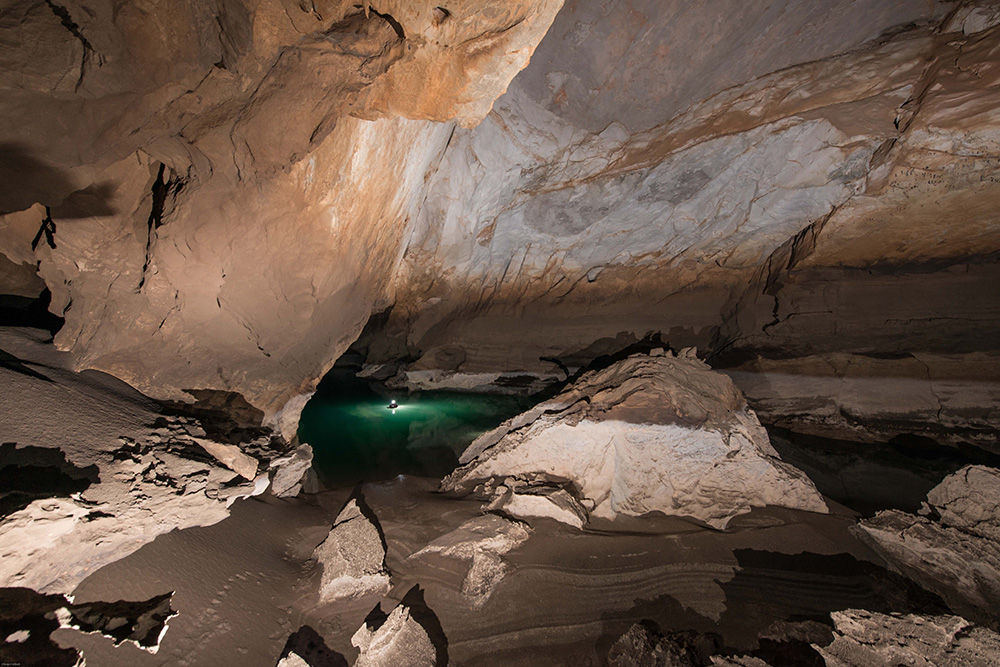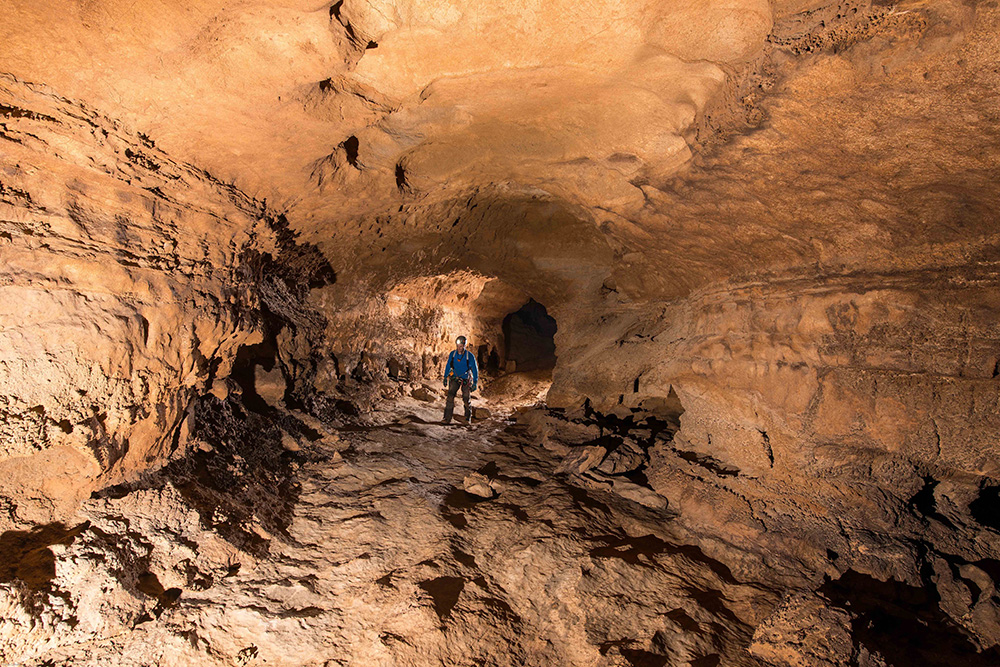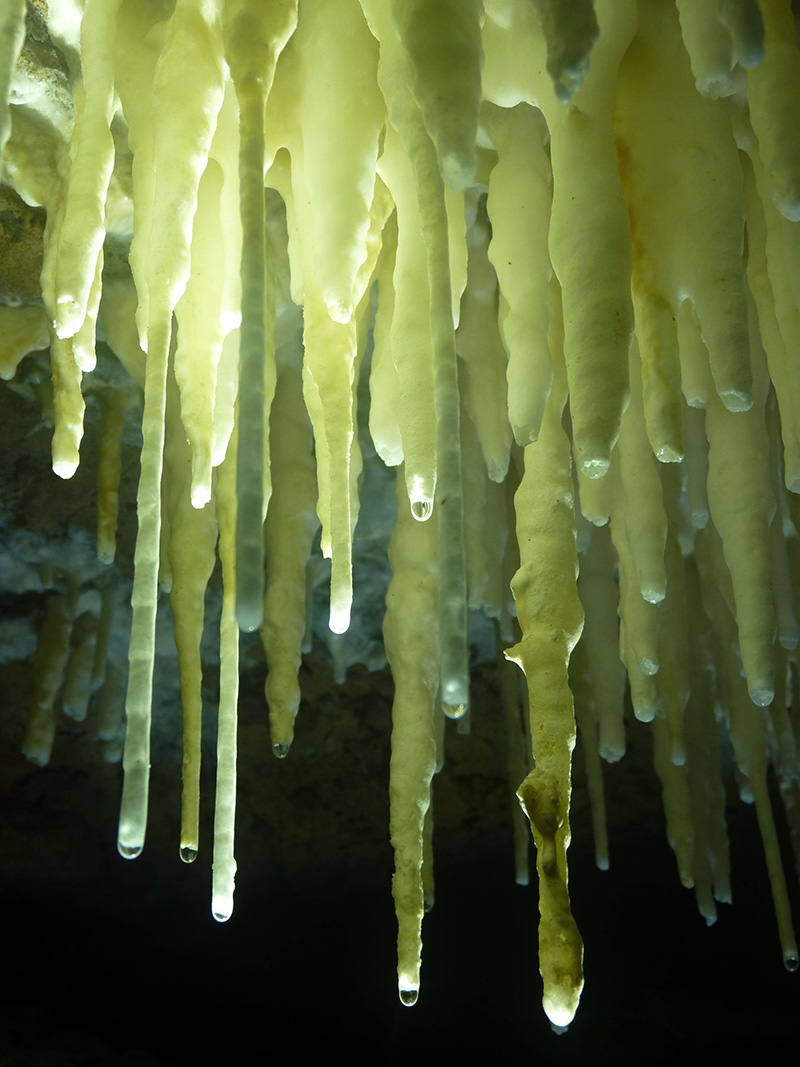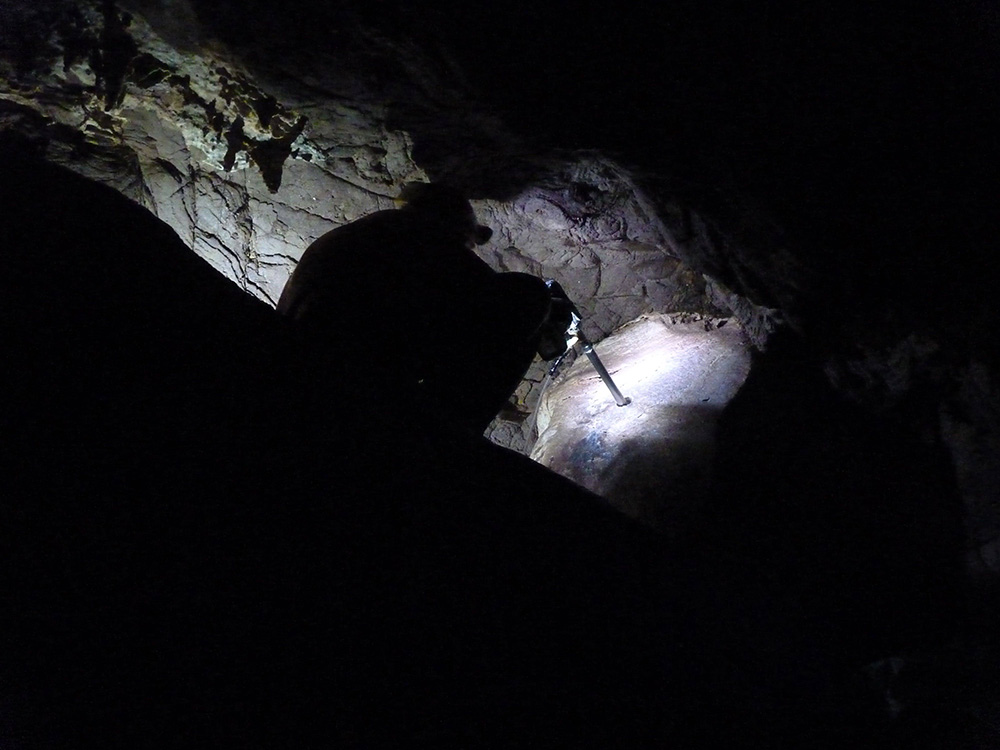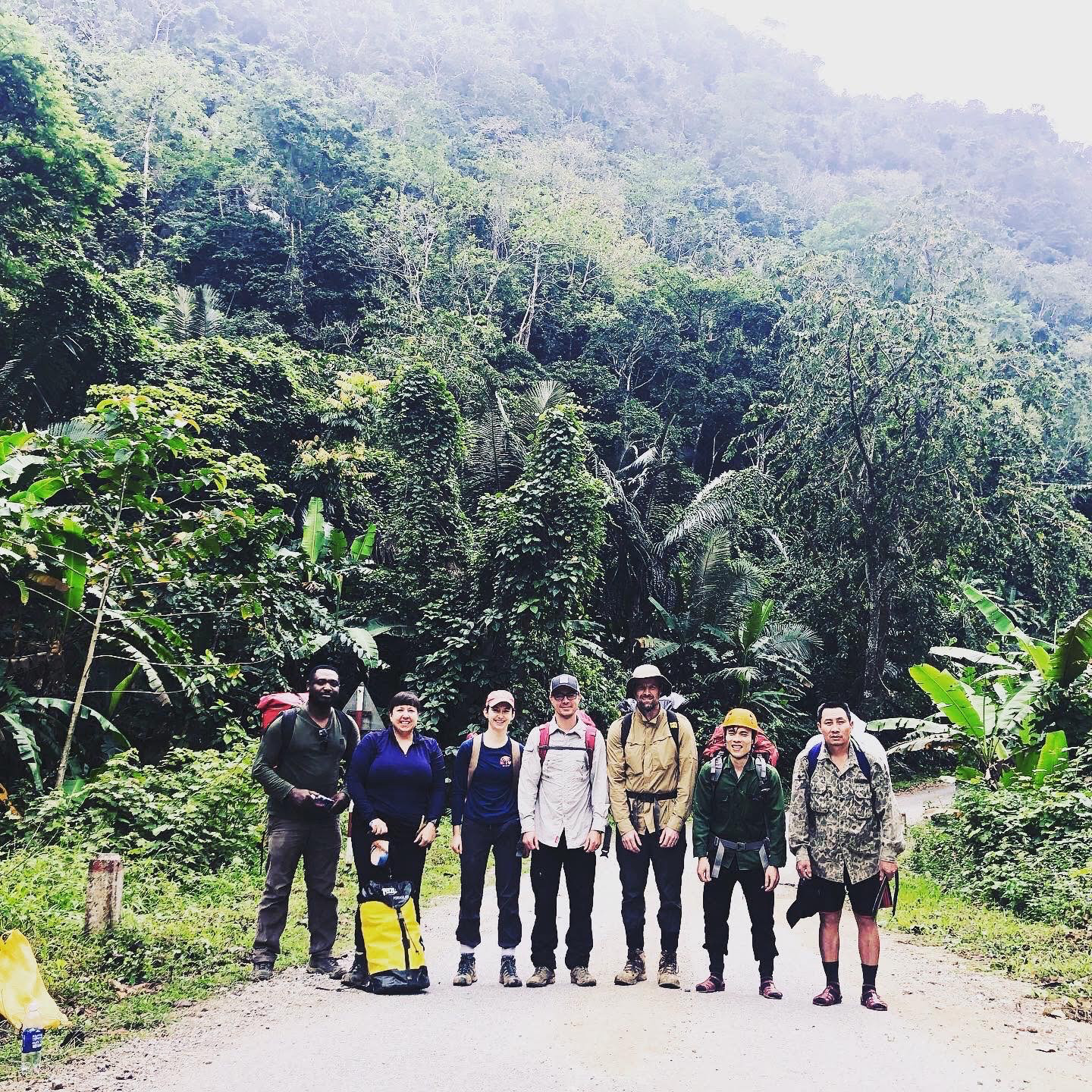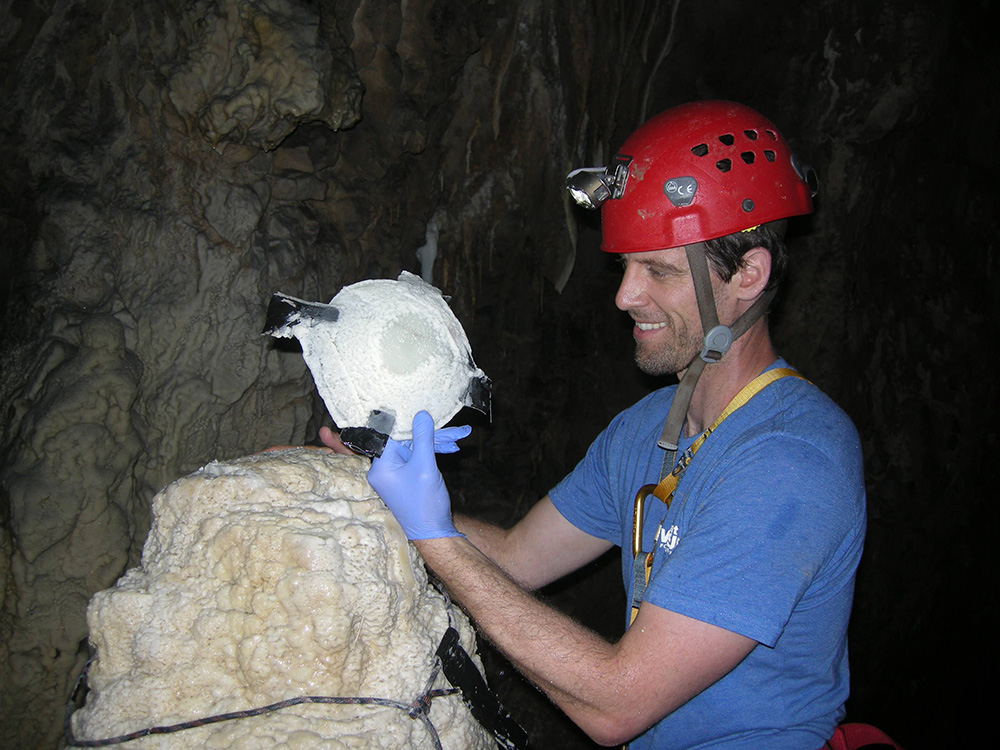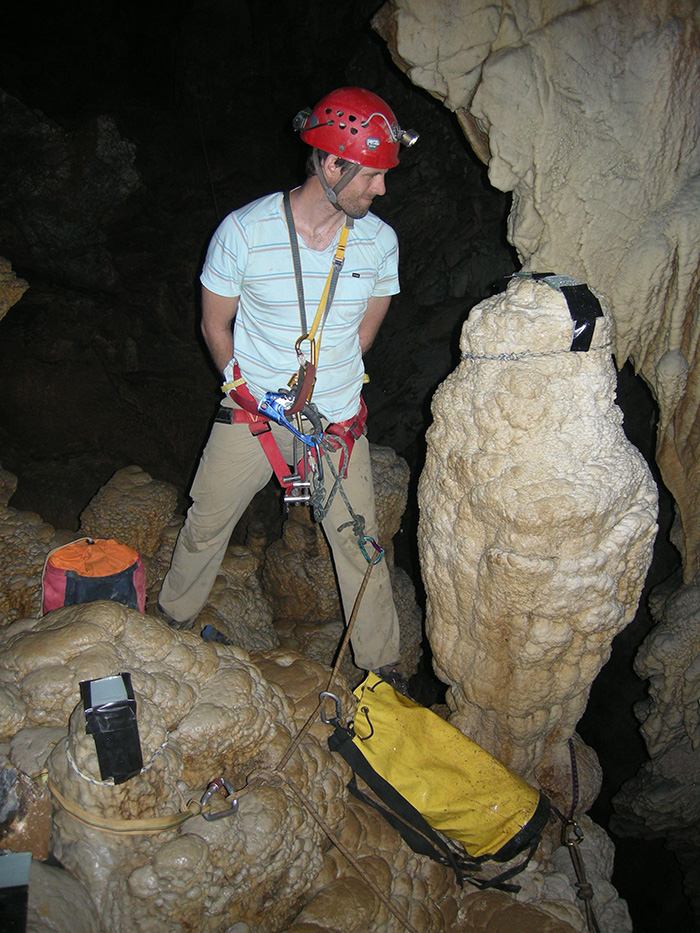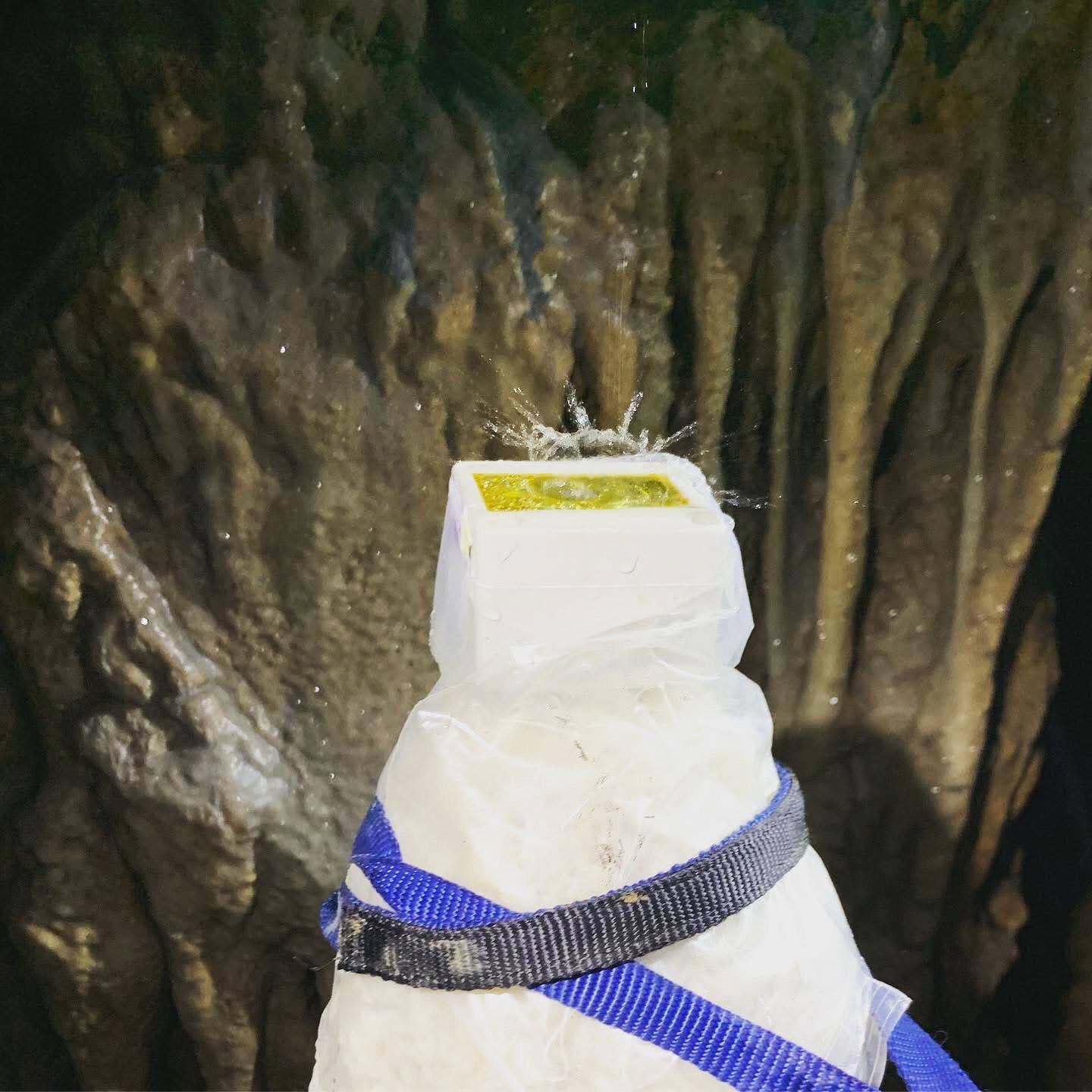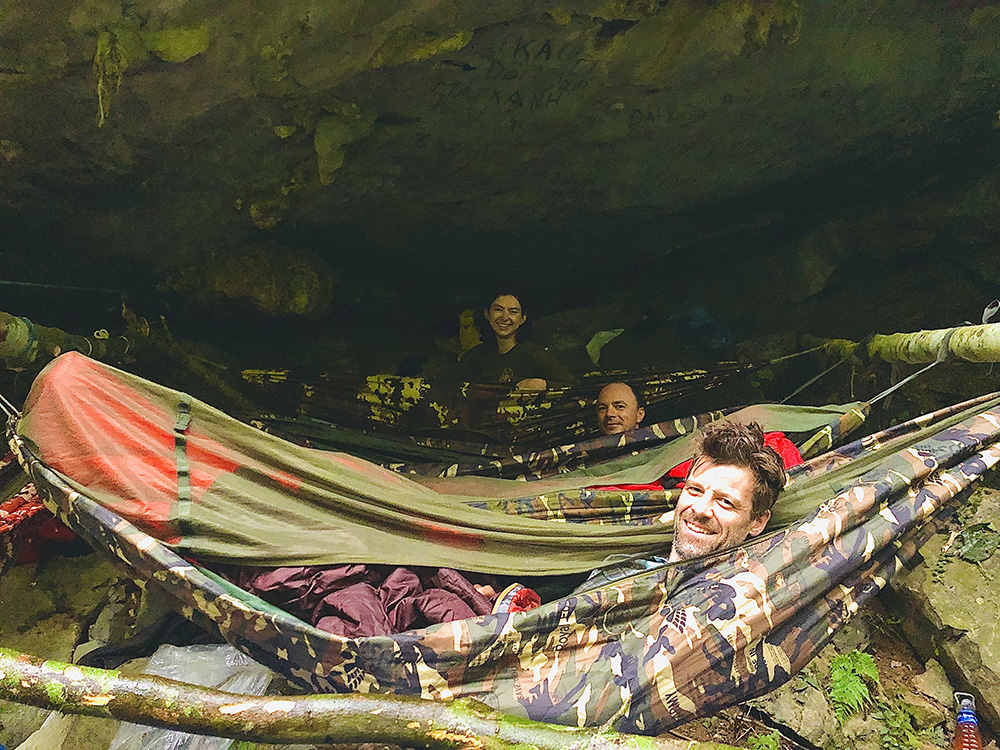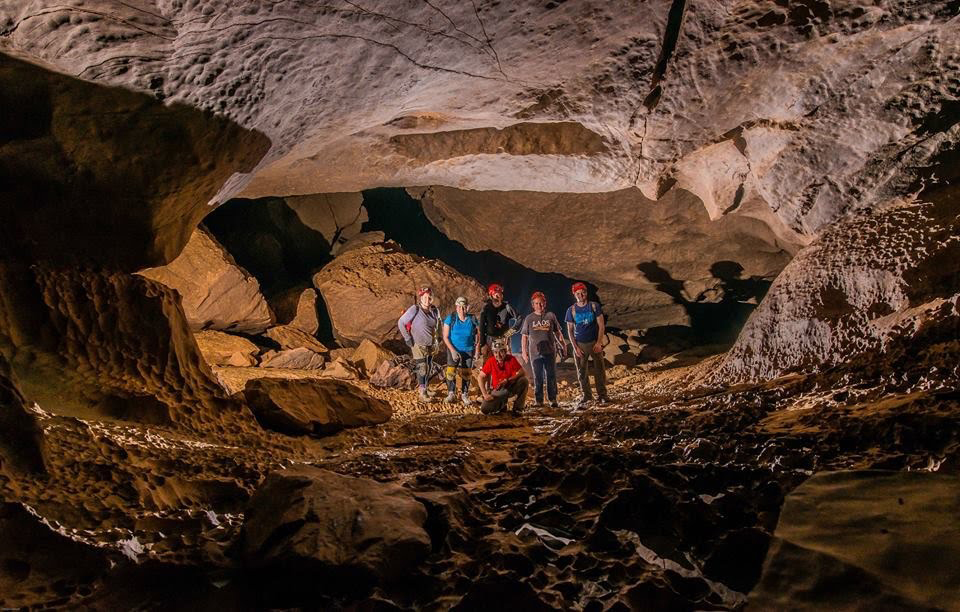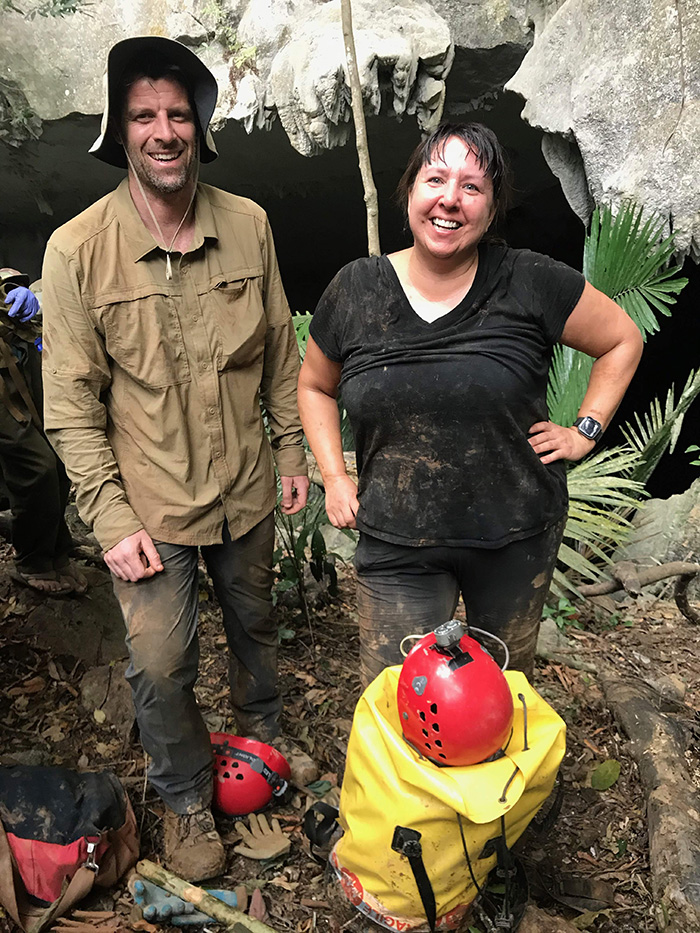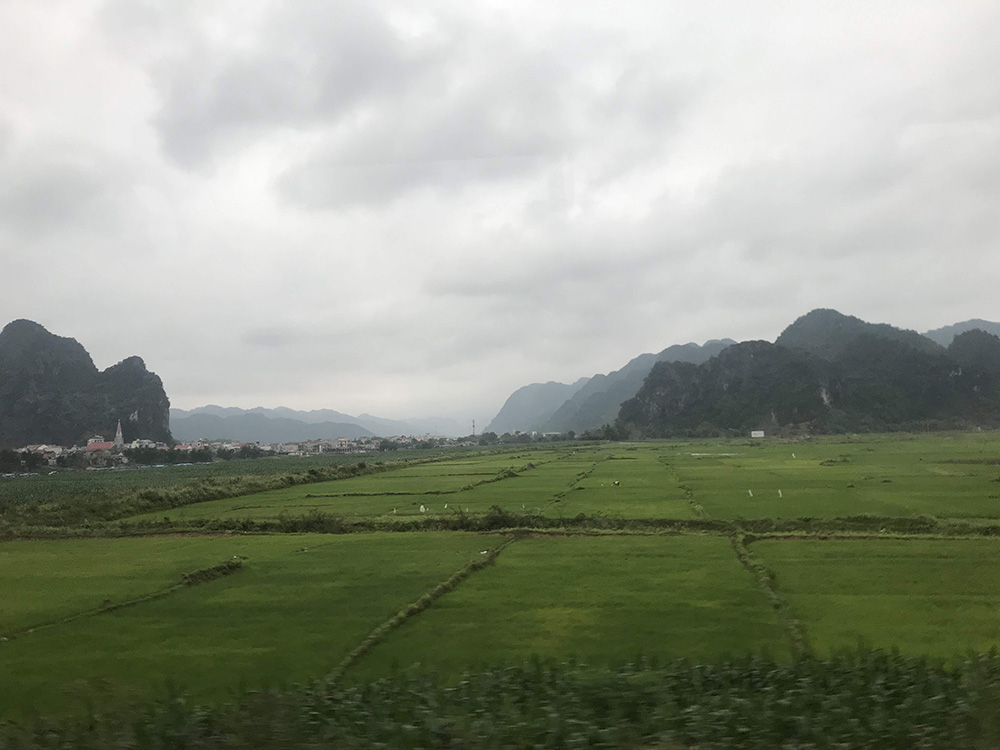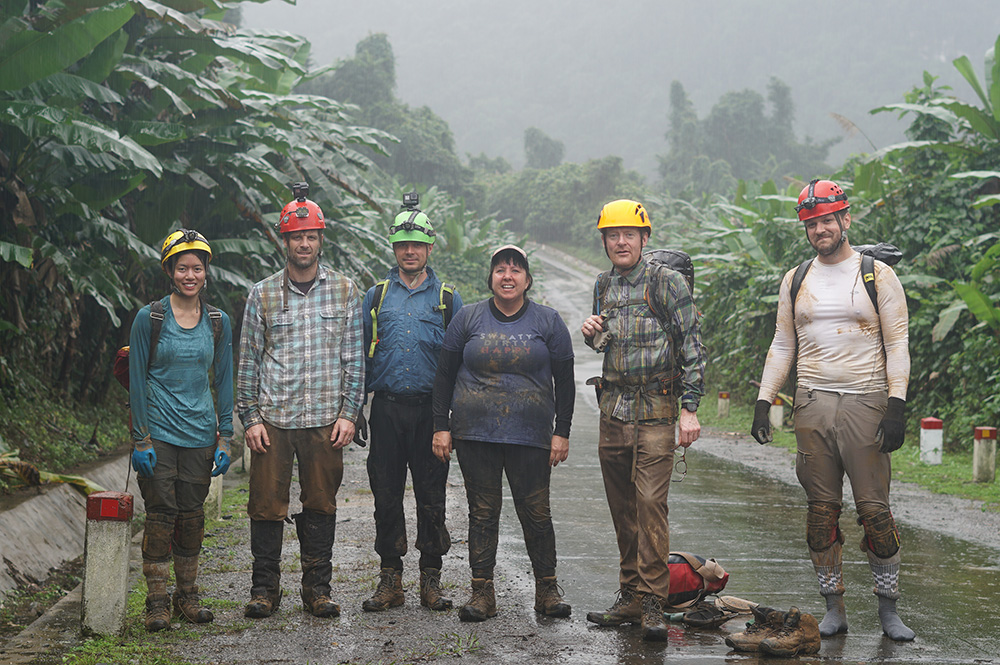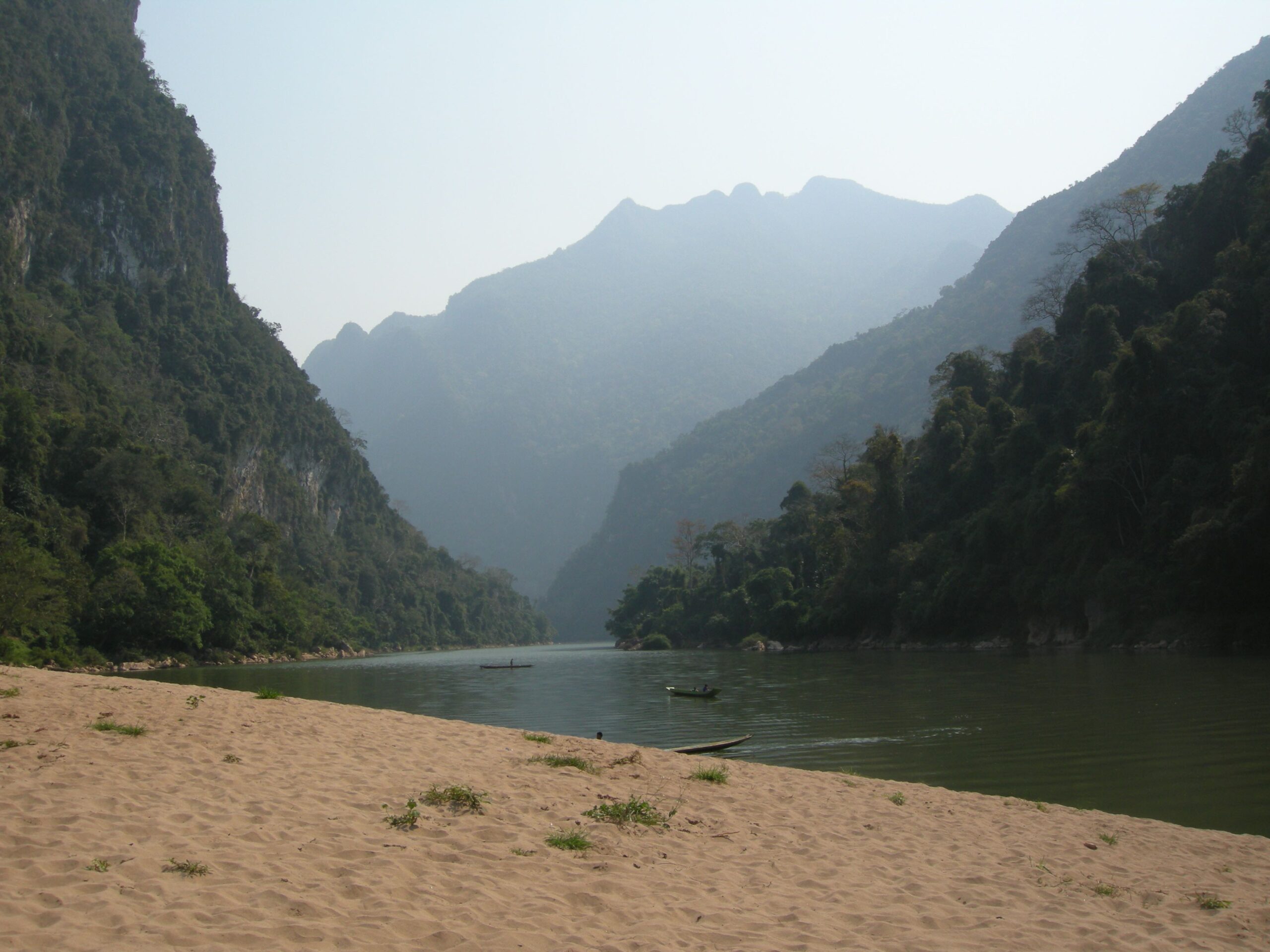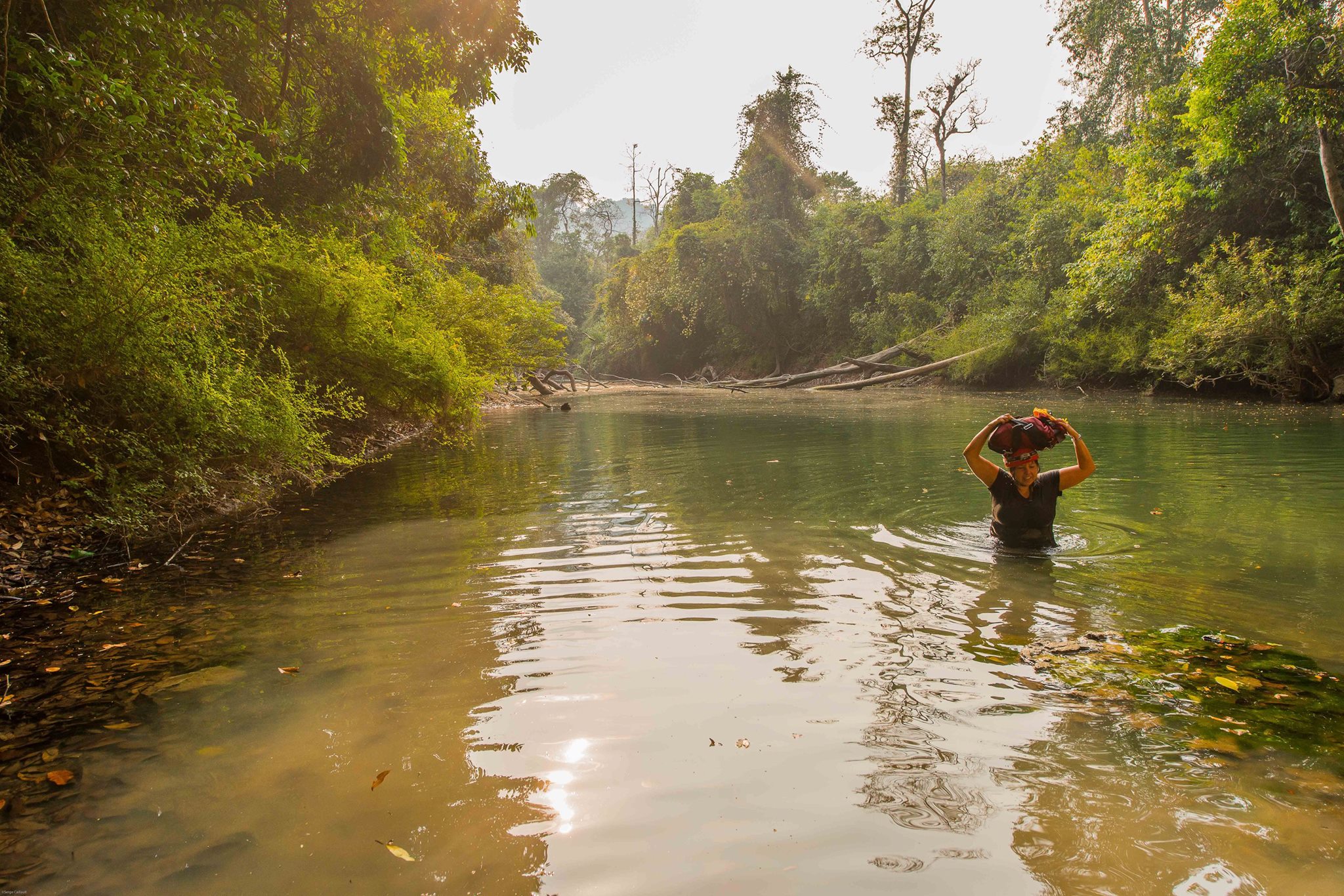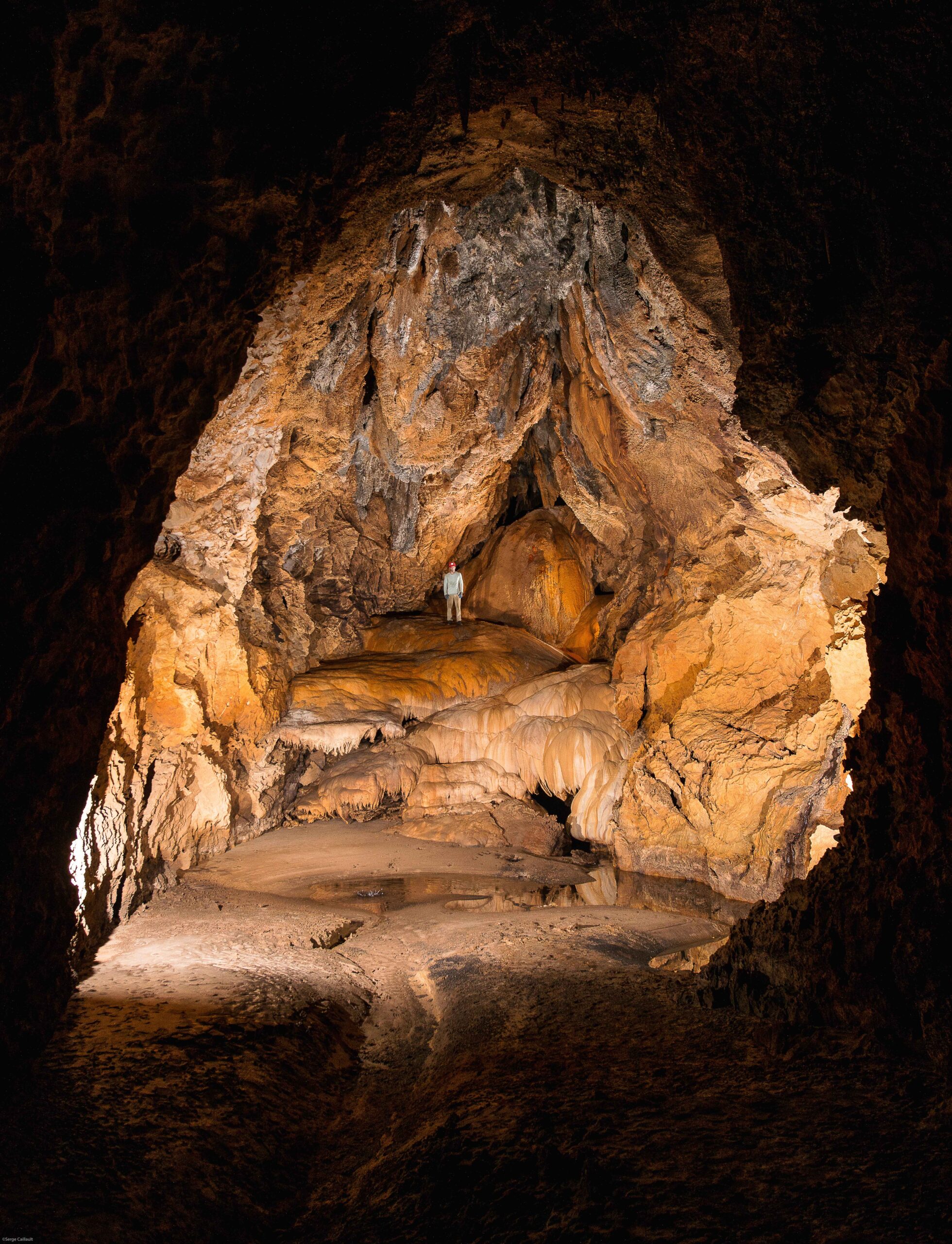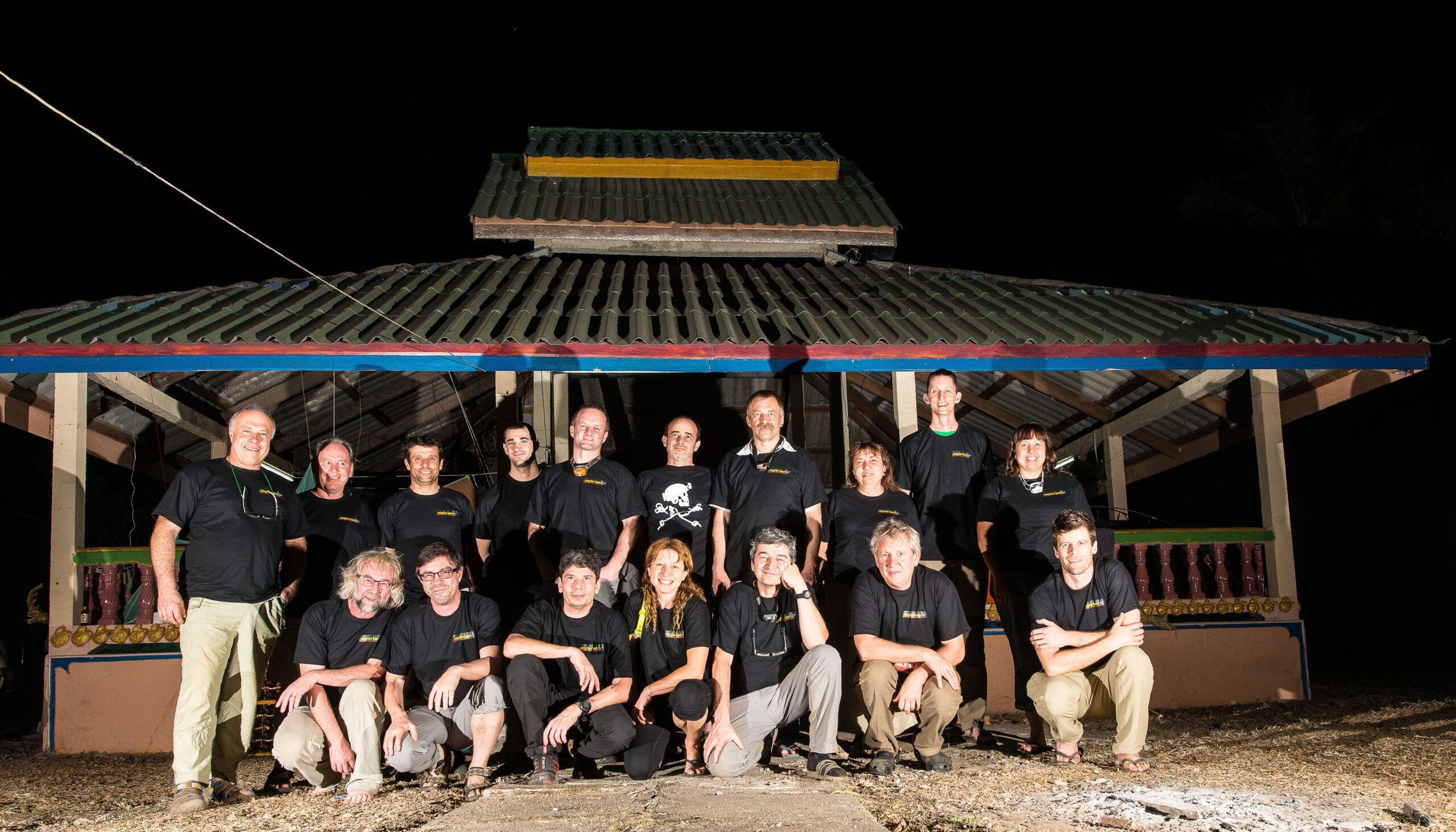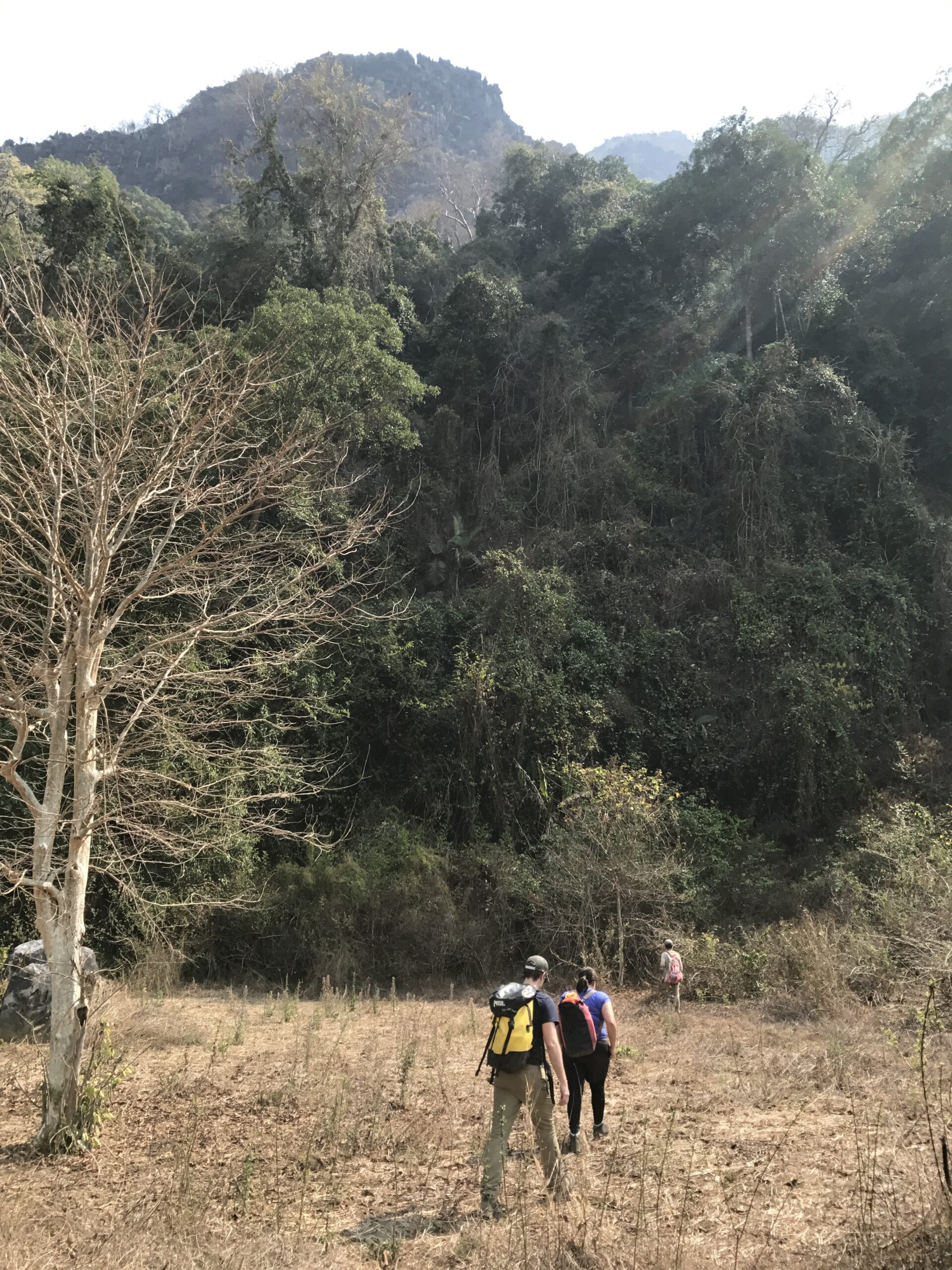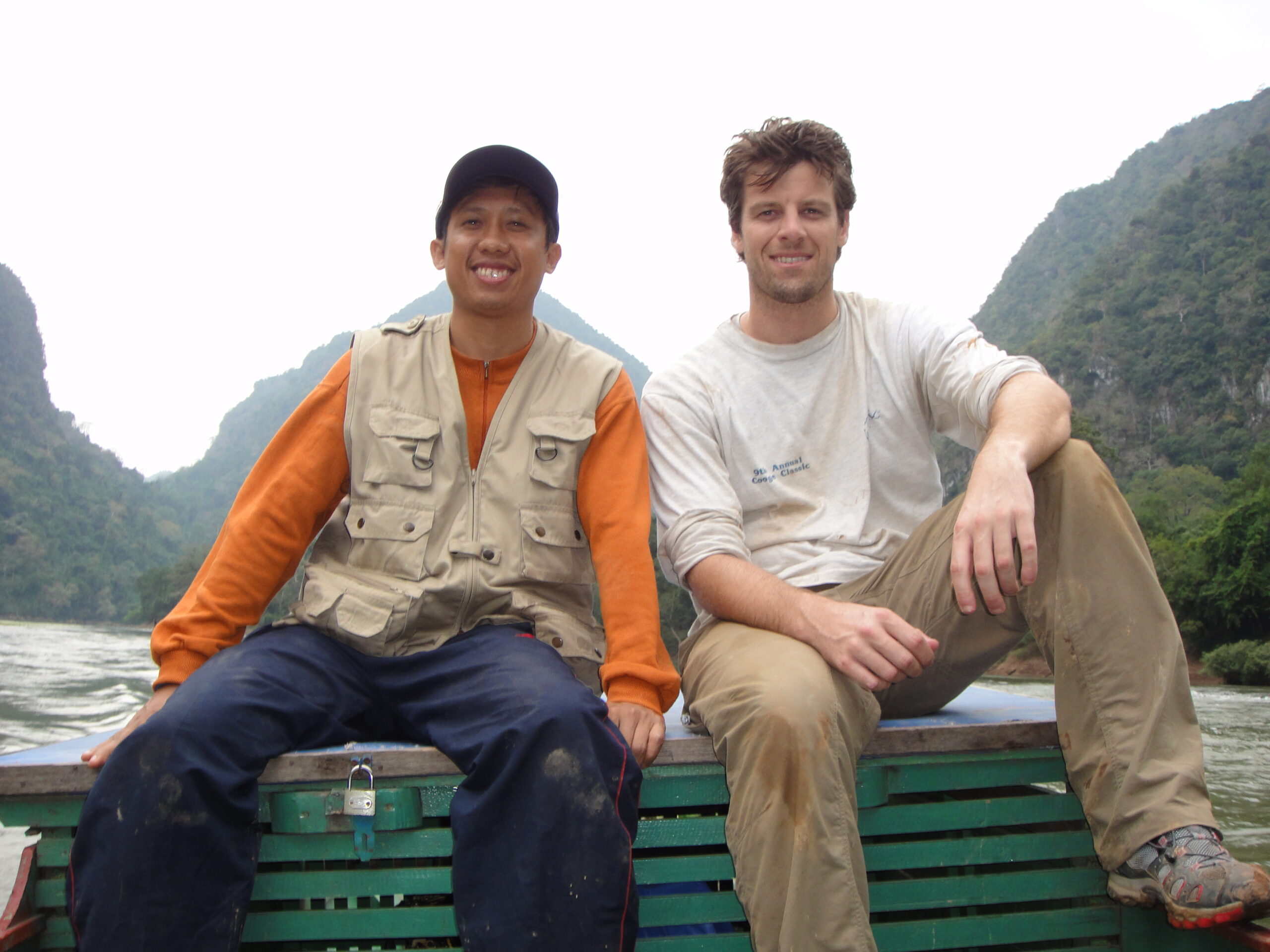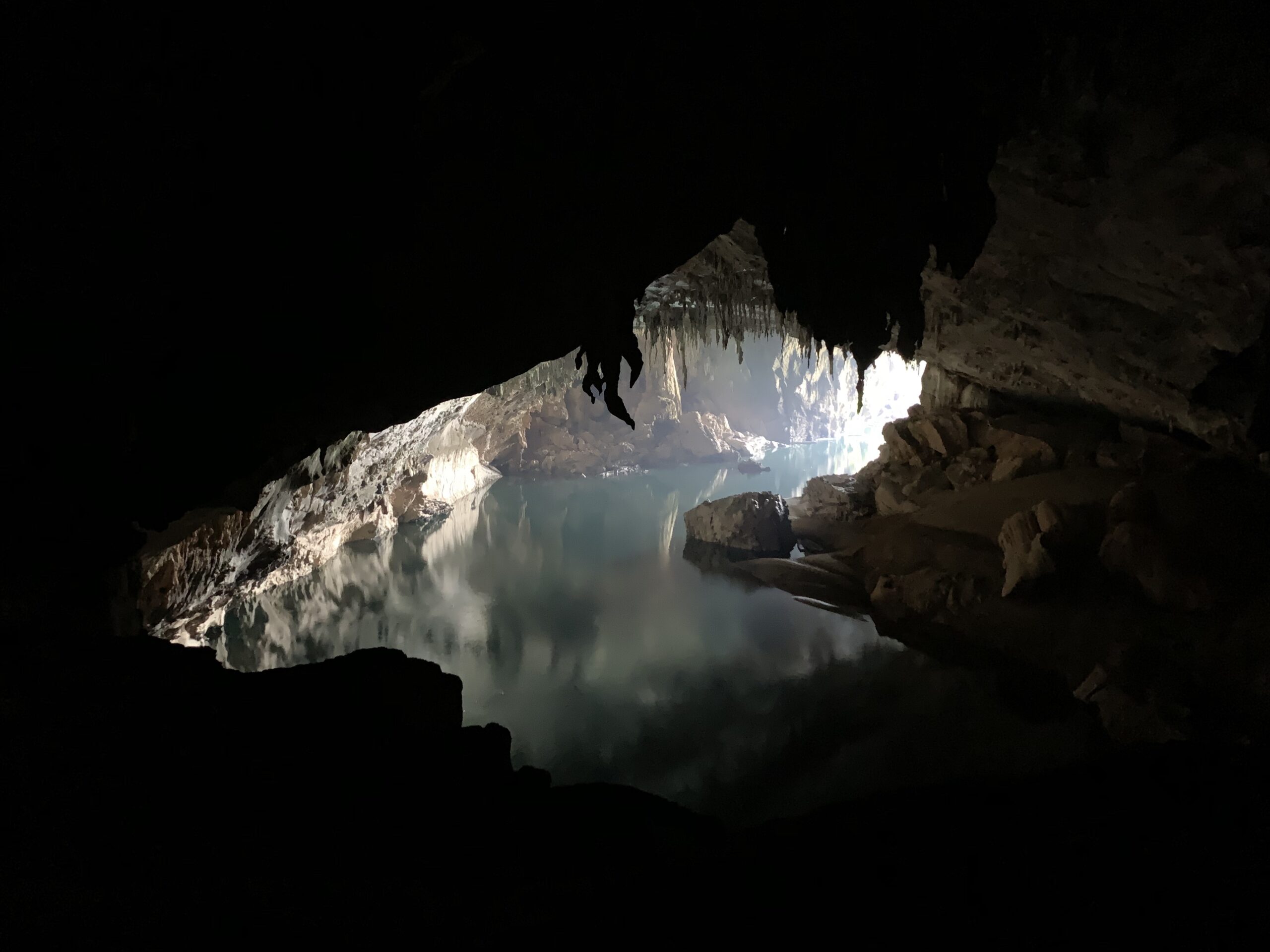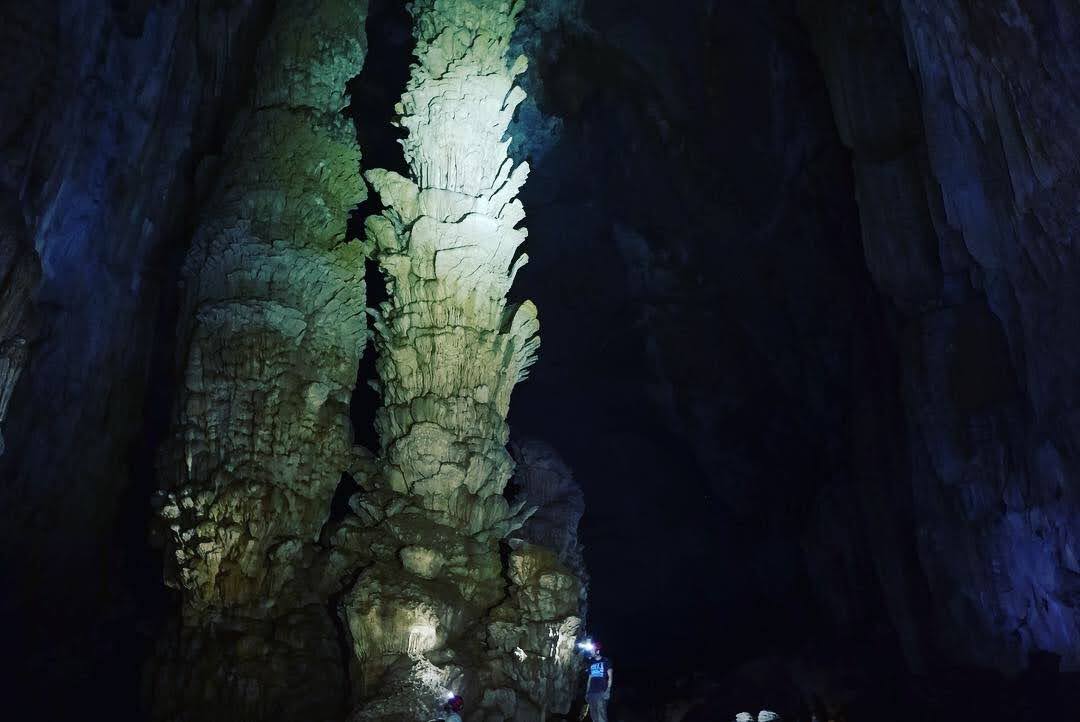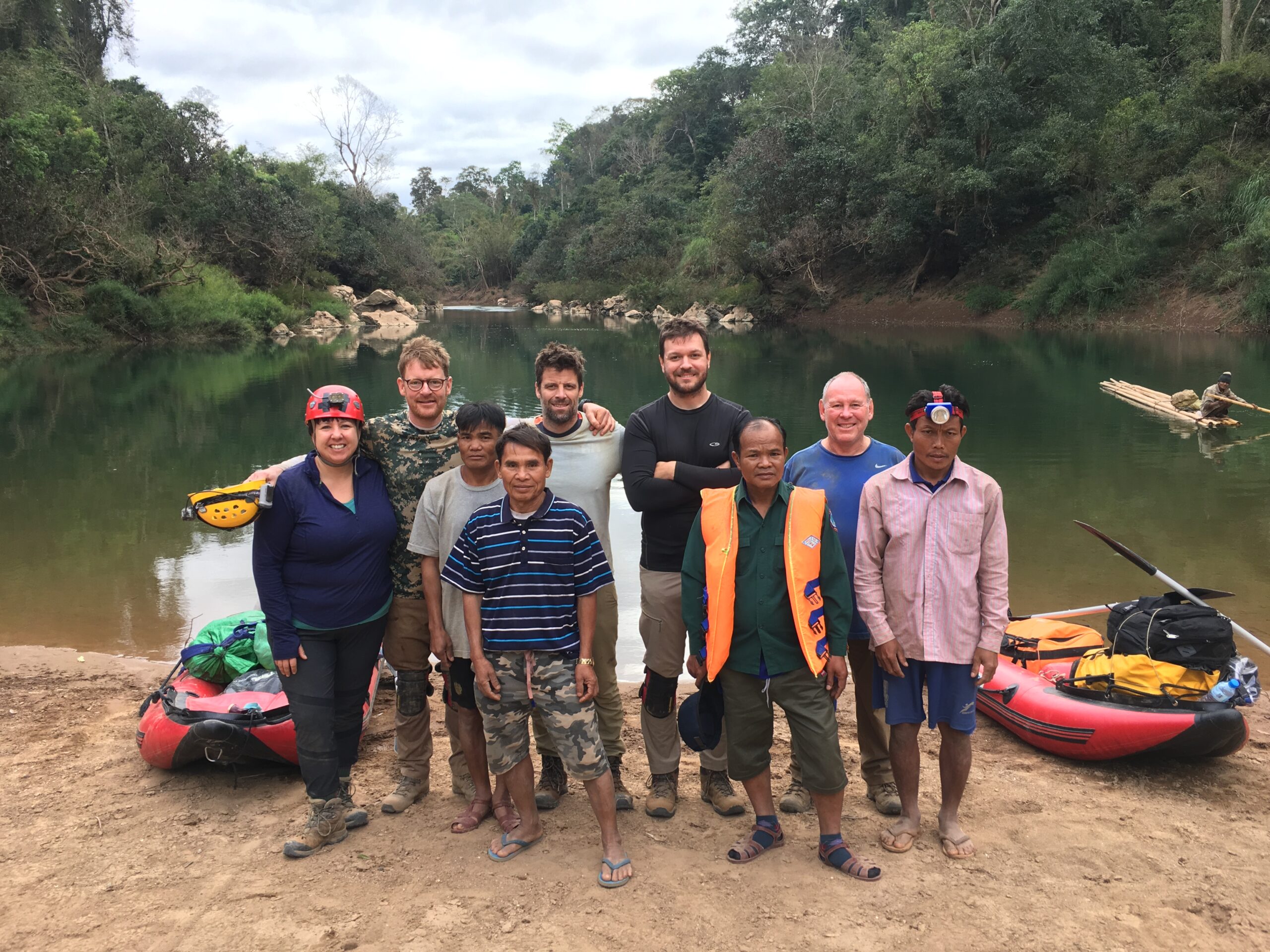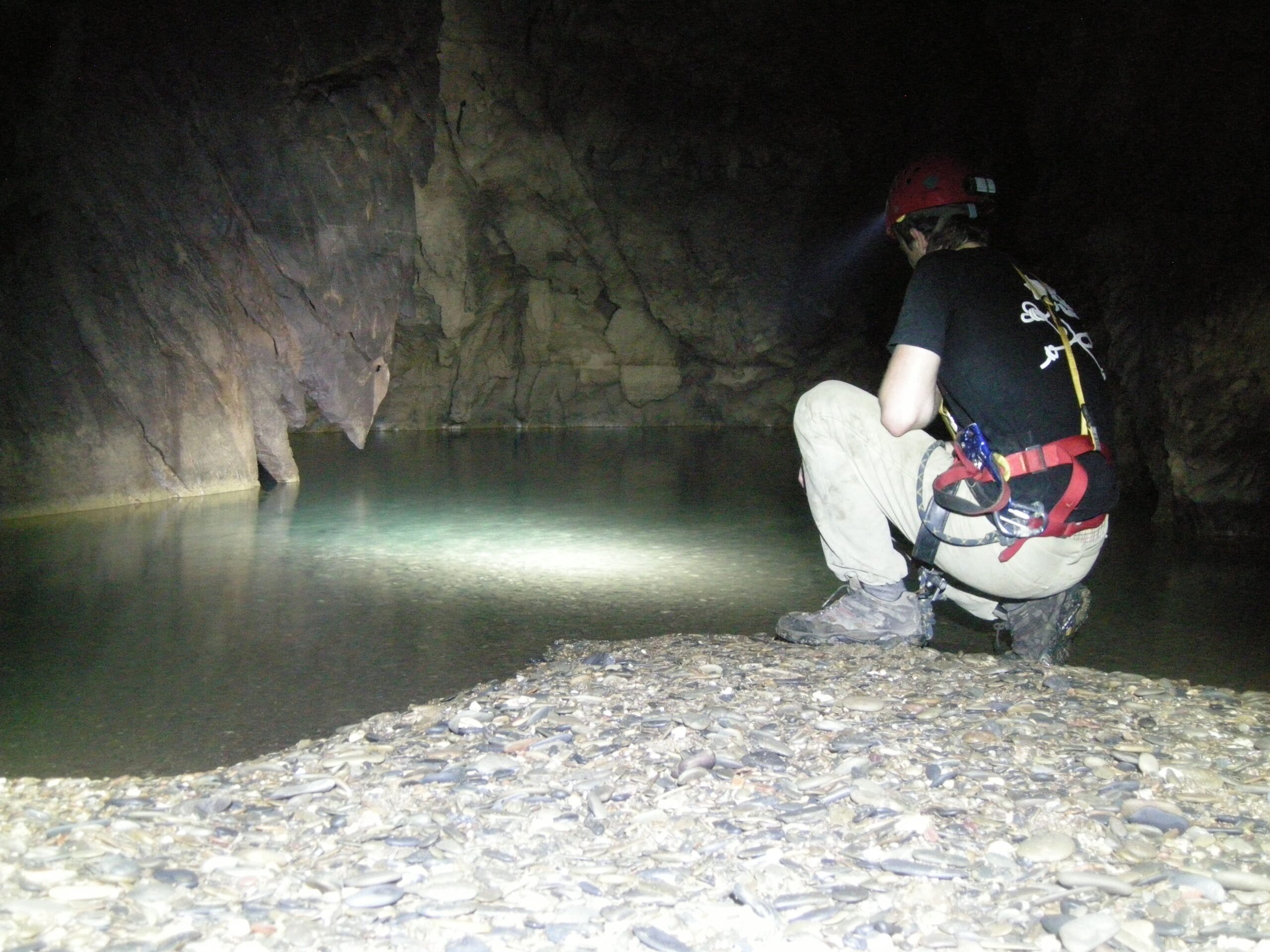PALEOCLIMATE
PALEOCLIMATE
What can caves reveal about past environments?

WE BUILD PALEOCLIMATE RECORDS USING GEOCHEMICAL TRACERS PRESERVED IN CAVE STALAGMITES
Much of the ongoing work in the Past Climate and Ecosystems Lab involves utilizing Earth’s natural archives, or “proxies”, to reconstruct tropical and extratropical hydroclimate variability on timescales ranging from glacial-interglacial (i.e., 10s-100s of thousands of years) to the last millennium. This work has primarily involved measuring various geochemical tracers preserved in cave stalagmites (“speleothems”) that act as natural recorders of past environmental conditions, including rainfall, vegetation, and temperature.
Australasian Monsoons of the Past
The Australasian monsoon systems play an important role in the global climate system as they transport vast amounts of heat and moisture from the tropics to the higher latitudes. Even minor variations in the strength and/or timing of seasonal rainfall can have profound impacts on the billions of people living within the monsoon domains. Yet, future projections of regional-scale hydrologic changes remain highly uncertain, in part because we lack knowledge of how these monsoon systems have varied prior to the instrumental record when Earth’s boundary conditions were different from today. To help address this, we are currently building new hydroclimate records from a host of geochemical tracers, in particular stable isotopes (δ18O, δ13C) and trace elements (Mg, Sr, Ba, P, U), preserved in stalagmites from Laos, Vietnam, Australia, Indonesia, and China.
Representative Publications
Deciphering local and regional hydroclimate resolves contradicting evidence on the Asian monsoon evolution.
*Wolf, A., Ersek, V., Braun, T., French, A., McGee, D., Bernasconi, S.M. Skiba, V., Griffiths, M.L., Johnson, K.R., Fohlmeister, J., Breitenbach, S.F.M., Pausata, F.S.R., Tabor, C.R., Longman, J., Roberts, W.H.G., Chandan, D., Peltier, W.R., Salzmann, U., Limbert, D., Trinh, D.A., 2023. Nature Communications, 14, 5697.
Glacial changes in sea level modulated millennial-scale variability of Southeast Asian autumn monsoon rainfall.
*Patterson, E.W., Johnson, K.R., Griffiths, M.L., Kinsley, C.W., McGee, D., Du, X., Pico, T., *Wolf, A., Ersek, V., Mortlock, R.A. and Yamoah, K.A., 2023. Proceedings of the National Academy of Sciences, 120(27), p.e2219489120.
End of Green Sahara amplified mid-to late Holocene megadroughts in mainland Southeast Asia.
Griffiths, M.L., Johnson, K.R., Pausata, F.S., White, J.C., Henderson, G.M., Wood, C.T., Yang, H., Ersek, V., Conrad, C. and Sekhon, N., 2020. Nature communications 11(1), 1-12.
Western Pacific hydroclimate linked to global climate variability over the past two millennia.
Griffiths, M.L., Kimbrough, A.K., Gagan, M.K., Drysdale, R.N., Cole, J., Johnson, K., Zhao, J.-x., Cook, B., Hellstrom, J.C., Hantoro, W.S., 2016. Nature Communications, 7:11719.
Antarctic link with East Asian Summer monsoon variability during the Heinrich Stadial-Bølling interstadial transition.
Zhang, H.-B., Griffiths, M.L., Xie, S.-C., Huang, J.-H., Cai, Y.-J., Wang, C.F., Zhang, F., Cheng, H., Ning, Y.-F., Hu, C.-H., 2016. Earth and Planetary Science Letters, 453: 243-251.
Increasing Australian-Indonesian monsoon rainfall linked to early Holocene sea-level rise.
Griffiths, M.L., Drysdale, R.N., Gagan, M.K., Zhao, J.-x., Ayliffe, L.K., Hellstrom, J.C., Hantoro, W.S., Frisia, S., Feng, Y.-x., Cartwright, I., St. Pierre, E., Fischer, M.J., Suwargadi, B.W., 2009. Nature Geoscience 2: 636-639.
Modern Rainfall and Cave Drip Water Studies
Most speleothem paleoclimate studies have relied on the oxygen-isotope (δ18O) composition of calcite along the growth axes of stalagmites. Assuming deposition under equilibrium conditions, the δ18O of the calcite is dependent only on that of the drip-water, which is related to precipitation δ18O and cave temperature. The cave drip-water signal dominates and mainly reflects changing rainfall δ18Op, which is closely related to climate. However, the controls on the isotopic composition of rainfall at a given site can be highly complex, reflecting both the temperature and composition of the moisture source, the rainout and moisture recycling history during transport, and convective and related processes during precipitation. It is also important to consider the impacts of the karst hydrology on cave drip-water δ18O/δ13C and other speleothem geochemical tracers (e.g., Mg/Ca, Sr/Ca, 14C) used in paleoclimate reconstructions. Our focus is to better constrain the processes that control the rainfall and drip-water composition over time through modern cave drip-water and rainfall monitoring, analysis of station data, and isotope-enabled climate model simulations.
Representative Publications
Rainwater isotopes in central Vietnam controlled by two oceanic moisture sources and rainout effects.
Wolf, A., Roberts, W.H., Ersek, V., Johnson, K.R. and Griffiths, M.L., 2020. Scientific Reports 10: 1-14.
Interannual controls on oxygen isotope variability in Asian monsoon precipitation and implications for paleoclimate reconstructions.
Yang, H., Johnson, K.R., Griffiths, M.L. and Yoshimura, K., 2016. Journal of Geophysical Research: Atmospheres, 121(14): 8410-8428.
Proxy Development and Advancement
Our research also involves investigating new tools for reconstructing past environments from stalagmites. Specifically, we are interested in how various ‘non-traditional’ isotope systems (e.g., 14C, Sr, Mg, Ca) may help to deconvolve the myriad of biogeochemical, environmental, and hydrological signals that can be preserved in the cave carbonate deposits. One such example is the role of vegetation and soil processes in controlling speleothem geochemistry and the potential for these non-traditional proxies to inform us of these processes. For instance, through various collaborations with colleagues in China (Prof. Shucheng Xie) and the U.K. (Assoc. Prof. James Bendle) we are working to help develop novel proxies of soil and vegetation changes using compound-specific isotopic analysis of fatty acids preserved in karstic soil and speleothem calcite; of note, we recently produced the first Holocene record of high and low molecular weight δ13C from Heshang Cave in central China (Wang et al., 2019), which we argued are proxies for changes in high and low order plant abundances and shifts in soil respiration.
Representative Publications
Cave lipid biomarkers reveal increased soil microbial respiration during Holocene warm periods.
Wang, C., Bendle, J., Greene, S.E., Griffiths, M.L., Huang, J., Moossen, H., Zhang, H., Ashley, K., Xie, S., 2019. Earth and Planetary Science Letters 525: 115754.
Hydrological control of the dead carbon fraction in a tropical Holocene speleothem.
Griffiths, M.L., Drysdale, R.N., Hua, Q., Fohlmeister, J., Johnson, K., Hellstrom, J.C., Gagan, M.K., Zhao, J.-x., 2012. Quaternary Geochronology 14: 81-93.
Younger Dryas-Holocene temperature and rainfall history of southern Indonesia from δ18O in speleothem calcite and fluid inclusions.
Griffiths, M.L., Drysdale, R. N., Vonhof, H.B., Gagan, M.K., Zhao, J-x., Ayliffe, L.K., Hantoro, W.S., Hellstrom, J.C., Cartwright, I., Frisia, S., Suwargadi, B.W., 2010. Earth and Planetary Science Letters 295: 30-36.
Funding
Collaborative Research: Speleothem Constraints on Seasonal Hydroclimate Variability in Mainland Southeast Asia since the Late Pleistocene. [PI: Kathleen Johnson (UC Irvine); co-PIs: M.L. Griffiths, David McGee (MIT)]. National Science Foundation, Paleo Perspectives on Climate Change (P2C2), AGS-GEO/ATM-2103051, $846,637 (74,606 to Griffiths). 07/01/21 – 06/30/24.
Drought or Deluge? How did Rainfall in the Tropical South Pacific Respond to Sudden Climate Change During the Glacial Period? [PI: D.J. Sinclair; AIs: A. Borsato, J.R. Brown, S. Frisia, M.L. Griffiths, R.A. Mortlock, S.J. Phipps, R.M. Sherrell]. Marsden Fund, Awards: 19-VUW-112, NZ$960,000. 01/20-01/23.
Collaborative Research: Calibrating South East Asian Proxies: Speleothems and Tree-Rings [PI: M.L. Griffiths; co-PIs: N. Davi (WPU), K. Johnson (UCI), B. Buckley (LDEO)]. National Science Foundation, Paleoclimate Perspectives on Climate Change (P2C2), AGS-GEO/ATM-1602947, $830,588 ($233,684 to Griffiths). 09/01/17 – 08/31/22.
Collaborative Research: Reconstructing deglacial and Holocene climate variability in South East Asia using speleothems and isotope-enabled model simulations [PI: K.R. Johnson; co-PI: M.L. Griffiths]. National Science Foundation, Paleoclimate Perspectives on Climate Change (P2C2), AGS-GEO/ATM-1404932, $504,413 ($59,496 to Griffiths).
Radiocarbon variations during the Younger Dryas from a tropical speleothem [PI: R.N. Drysdale; co-PI: M.L. Griffiths]. Australian Nuclear Science and Technology Organisation (ANSTO) Australian Institute of Nuclear Science and Engineering Grant (AINSE) Grant, AINGRA11/004, $14,700. 2011.
Assessment of climatic influences on 14C activity in a Holocene stalagmite from Flores, Indonesia [PI: R.N. Drysdale; co-PI: M.L. Griffiths]. ANSTO AINSE Grant, AINGRA10/148, $9,500. 2010.
14C variability in a Holocene stalagmite from Flores, Indonesia: a role of solar forcing on δ18O? [PI: R.N. Drysdale; co-PI: M.L. Griffiths]. ANSTO AINSE Grant, AINGRA08/146, $7,300. 2008.
Collaborators
Kathleen Johnson, University of California, Irvine
Russell Drysdale, University of Melbourne
Vasile Ersek, Northumbria University
David McGee, MIT
James Bendle, University of Birmingham
Joyce White, University of Pennsylvania
Stephen Acabado, University of California, Los Angeles
Cyler Conrad, University of New Mexico
Andrea Borsato, University of Newcastle
Silvia Frisia, University of Newcastle
Shucheng Xie, China University of Geosciences
Hongbin Zhang, China University of Geosciences
Canfa Wang, China University of Geosciences

